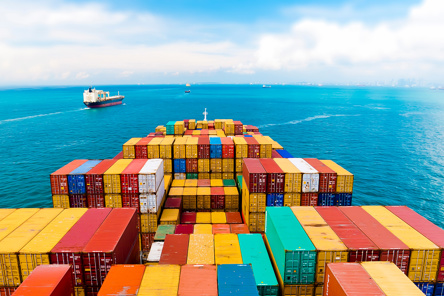During some down time at TPM, the premier conference for global logistics, SEKO’s Chief Commercial Officer, Global, Brian Bourke, sat down with Tony Barnes, Chief Commercial Officer, Americas, and Chris Capodanno, Vice President of Product Development and Strategic Client Solutions, to discuss the importance of non-vessel-operating common carriers (NVOs) in global trade in 2023, and the role SEKO plays in delivering success for its clients. Take a look!
Brian: So, let’s get started. Tony and Chris, can you give us an overview of the current landscape of NVOs?
Tony: With the market the way it is right now, we can foresee rates coming down to a more manageable level. However, it remains to be seen to what extent the rates can go further down and to what extent there will be a peak in rates if there are any unforeseen events, such as a strike at the ports or somewhere in the logistics industry.
Chris: I agree with Tony – the current market remains unpredictable. While we do foresee lower rates, it’s impossible to know how long those rates will stay low and if they will rise sharply at some point this year.
Brian: Why should shippers consider working with an NVO versus a direct carrier?
Tony: An NVO can help get your goods around the world quickly and at the right price. We are also able to be flexible and have the ability to pivot quickly if need be. Most traditional companies shipping products don’t have their own logistics departments. And if they do, they might not have the expertise needed to work with carriers directly. Because NVOs can handle not only the port to port but the inland moves if something's moving from ocean to air freight, making them an ideal choice for shippers.
Chris: NVOs are also able to navigate complex and changing customs requirements. With changing regulations and free trade zones, our clients aren’t able to keep track of everything and focus on selling their products. We are able to navigate customs with expertise, and work to save our clients as much duty as possible along the way. Being nimble in this industry is the name of the game, and NVOs can do that.
Brian: What value do NVOs bring to global fulfillment channels/supply chains that is otherwise unmet by alternative options (i.e., directly working with a carrier)?
Tony: This year is going to be all about flexibility and the ability to pivot quickly. Carriers have a lot of control over the market, and NVOs are able adapt to any changes the carriers make to their schedules, or any disruptions they experience, because NVOs can purchase space on any number of carriers. When working with one carrier directly, you lose a lot of the ability to pivot should they change things up. It’s much more efficient to work with an NVO because of our ability to remain flexible and adapt quickly.
Brian: How can an NVO help shippers be more flexible with their growth?
Chris: An NVO like SEKO, which is a 3PL provider, can pivot quickly – even when it comes to ocean freight. Shippers have been able to grow with us because we can provide ocean, air, and trucking logistics services. You may need origin services, you may need some trucking, you may need kitting, and we can do all of that.
Brian: Can you provide some examples of the kinds of cost-savings that NVOs/SEKO provides to clients/shippers?
Chris: From a pure ocean contracting standpoint, we're doing a lot of diving in, which is the ability to instantaneously offer short-term rates to our clients biweekly, monthly, quarterly. That means that you get a rate in your inbox for your specific needs and you can make smart decisions with wherever the market is at that time. In addition, we also can also offer fixed rates on annual contracts if long-term budgeting is important. We are even doing indexing for some clients. With all those options, we ensure shippers know that working with SEKO will allow them to stay within their budgets, and save money wherever feasible.
Brian: How does SEKO differentiate itself from other NVOs?
Chris: SEKO works really well with B2B shipments. We have so many customers that have had labor issues or problems with over inventory that their distribution centers just can't handle it. SEKO can come in, take a container, break it down, palletize, sort and seg it and deliver it to one of their 500 store formats for them. Our services relieve their distribution centers of inventory and labor problems and we're able to react quickly.
Tony: SEKO goes further with the innovation around ocean that shippers are looking for. There are thousands of NVOCCs you can use that are all kind of the same price. Service is different, but what are they bringing when you got a problem or coming up with different ways about what might happen tomorrow? SEKO has a truly global team and we are on the ground at the busiest ports – in Asia, the U.S. and elsewhere. We’re on the ground to manage shipments at origin, and also at destination, which is just one other aspect that allows SEKO to be truly flexible in this business.
Brian: Thank you both for your insights on NVOs in the current market, and SEKO specifically. The biggest takeaway for me is that SEKO is flexible – and that is crucial in today’s financial and logistics market. The ability to be nimble and pivot quickly is how we can provide the best options to our clients, and it’s great to hear from you both exactly how we are doing that.





